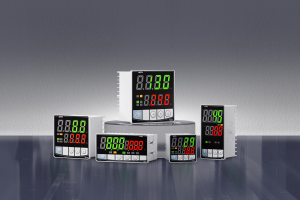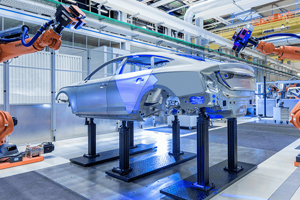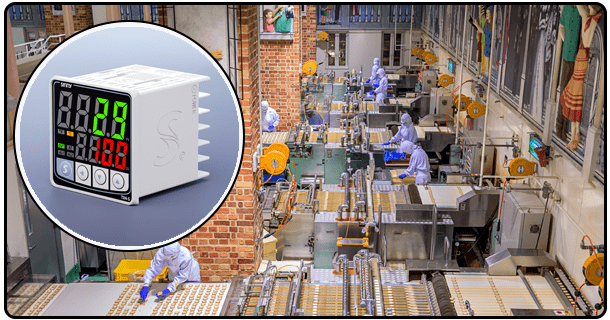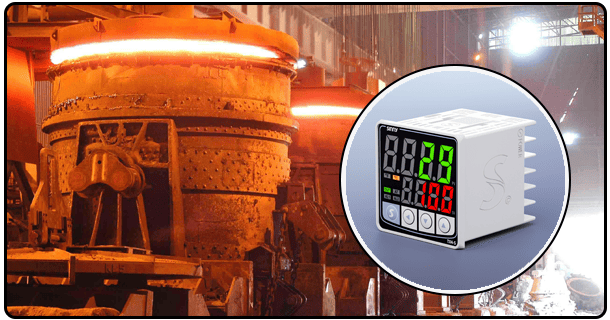What is a PID temperature controller? Features, advantages, and applications explained
Discover what PID controllers are and how they work. Discover its benefits, uses, components and how to choose the best one.
1. The following is a brief introduction to the topic:
Temperature regulation is a key component of the industrial automation process. is a PID Temperature Controller that stands out among the many advanced tools available for this application. It offers precision and efficiency. These controllers are used in all industries, including chemical plants, HVAC, and food processing. They ensure smooth processes by ensuring consistent temperatures. What is the PID controller and why does it perform better than conventional systems of control? The comprehensive guide will explore its advantages and applications while also examining its principles of operation.
2.What is PID temperature controller?
A PID controller regulates temperature using three mathematical functions. These are Proportional Integral and Derivative. The three functions are synergistic and work together to achieve the desired temperature setpoint.
PID controllers are far more advanced than basic on/off controls that only switch the output when temperature varies from setpoint. They ensure accurate and stable temperature controls by continuously adjusting outputs based on data in real time and trends predicted. They are an essential tool for industries that require critical temperatures.
3.What is the PID temperature controller?
A PID controller's operation revolves around the feedback loop. The process is broken into three key stages:
Measurement of the input: Sensors such as RTDs or thermocouples (Resistance temperature detectors) measure the process variables, i.e. the current temperatures.
Calculation of Error: A controller will compare the temperature measured to the setpoint. The difference is called the Error.
Control actions:
Proportional action (P): Ajusts output directly proportional to error. Larger errors result in stronger corrective actions.
Integral action (I): Adds up past errors to remove residual offsets which proportional control can't address.
Derivative action (D) Predicts errors in the future by analysing the rate at which the error changes, thus preventing oscillations and overshoots.
Adjustment of Output: A modulator, like a cooling or heating valve, is controlled by the combined output from the P, D, and I terms. This ensures that the variable in the process moves towards the setpoint.
The PID controller can maintain the temperature despite disturbances and changes to the operating environment.
4.Parts of the PID controller
Let's explore the components in more detail to gain a better understanding:
Proportional: This is the most direct and intuitive control method. Nevertheless, proportional control may only leave a slight error at steady state.
Integer (I) This term integrates the error in time to ensure that temperature is maintained at set point.
Derived (D) The term is used to predict future errors based on the rate of change in the error. This is especially useful in stabilizing the system, and dampening oscillations.
These three elements can be combined to create a flexible control strategy that is capable of managing a variety of processes.
5.The advantages of using PID temperature controllers
PID Temperature Controllers offer many advantages over simpler temperature control systems.
Excellent precision: The ability to minimise errors allows for exceptional accuracy when maintaining desired temperatures.
Stability PID controllers are able to achieve stability by addressing the past, current, and anticipated errors. This eliminates oscillations, disturbances, or frequent fluctuations.
Versatility Can be used in a wide range of industries from HVAC to pharmaceuticals.
Automatism: They save resources and time by reducing manual intervention.
Energy efficiency: Optimized controls actions lead to lower energy consumption, and operational costs.
6.PID Temperature Controls: Applications
PID controllers, which are highly adaptable and precise, can be found in many industries. Here are a few notable applications.
HVAC System: PID controllers are used in heating, ventilation and air-conditioning systems to maintain a comfortable climate by controlling airflow and temperature.
Food processing: Ensure accurate cooking, cooling, and storage temperatures in order to meet quality and safety standards.
Manufacturing Chemicals: Provides the required thermal stability for chemical reactions.
Medical equipment: Regulation of temperatures in devices such as incubators, autoclaves and sterilizers.
The use cases above highlight the role of PID controls in maintaining the safety and efficacy of processes.
7.History of PID controllers
Nicolas Minorsky, who was working with ship steering systems at the time of its introduction in 1922 and introduced PID theory to it. Nicolas Minorsky's groundbreaking work laid down the foundations for today's PID controllers. They have evolved from mechanical devices into digital systems with sophisticated algorithms and interfaces.
What to Look for When Choosing a PID Temperature Control
When selecting the best PID controller, it is important to consider several factors.
Applicable Requirements: Determine the range of temperature, the response time and precision required for your process.
Environment Conditions: Make sure the controller is able to withstand humidity, temperature changes, and vibration.
Budget: Consider the cost and functionality of a product to find one that will meet your requirements without going over your budget.
Reputation Choose controllers made by trusted brands that have a track record of reliability and support for their customers.
Honeywell, Omron and Eurotherm are among the brands that offer PID controllers.
8.The conclusion of the article is:
PID temperature controls are essential to a wide range of industrial and commercial applications. Combining proportional, derivative, and integral actions, these controllers deliver precision, stability and efficiency that is unmatched. PID controllers are becoming more important as industries embrace automation. They will continue to play a key role in modern process control.
- What is PID Temperature Control (PID)? What are the advantages, principles, and applications of PID temperature control?
- What does PID stand for on a temperature controller? Explained in a clear way!























